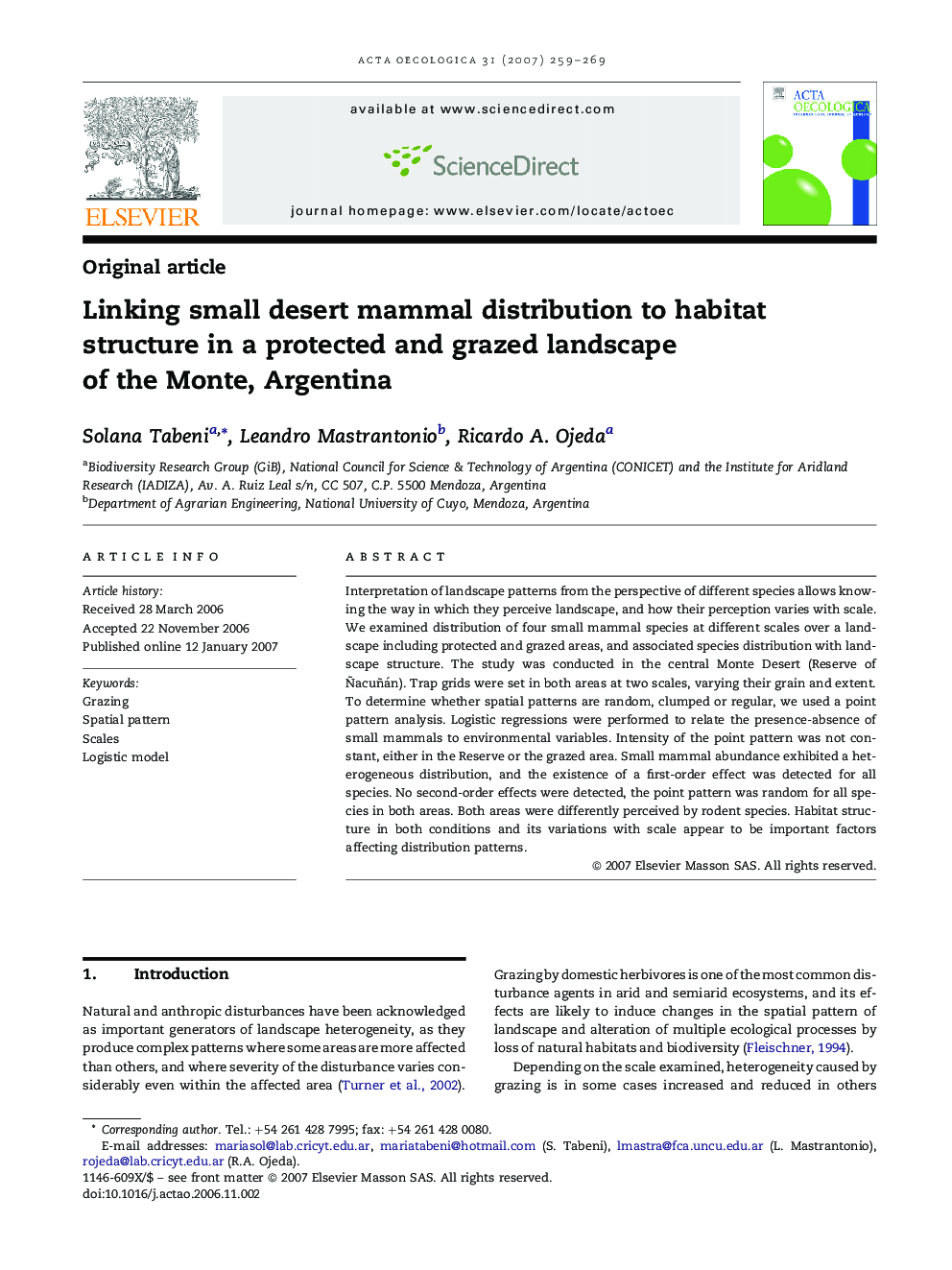| Article ID | Journal | Published Year | Pages | File Type |
|---|---|---|---|---|
| 4381652 | Acta Oecologica | 2007 | 11 Pages |
Interpretation of landscape patterns from the perspective of different species allows knowing the way in which they perceive landscape, and how their perception varies with scale. We examined distribution of four small mammal species at different scales over a landscape including protected and grazed areas, and associated species distribution with landscape structure. The study was conducted in the central Monte Desert (Reserve of Ñacuñán). Trap grids were set in both areas at two scales, varying their grain and extent. To determine whether spatial patterns are random, clumped or regular, we used a point pattern analysis. Logistic regressions were performed to relate the presence-absence of small mammals to environmental variables. Intensity of the point pattern was not constant, either in the Reserve or the grazed area. Small mammal abundance exhibited a heterogeneous distribution, and the existence of a first-order effect was detected for all species. No second-order effects were detected, the point pattern was random for all species in both areas. Both areas were differently perceived by rodent species. Habitat structure in both conditions and its variations with scale appear to be important factors affecting distribution patterns.
